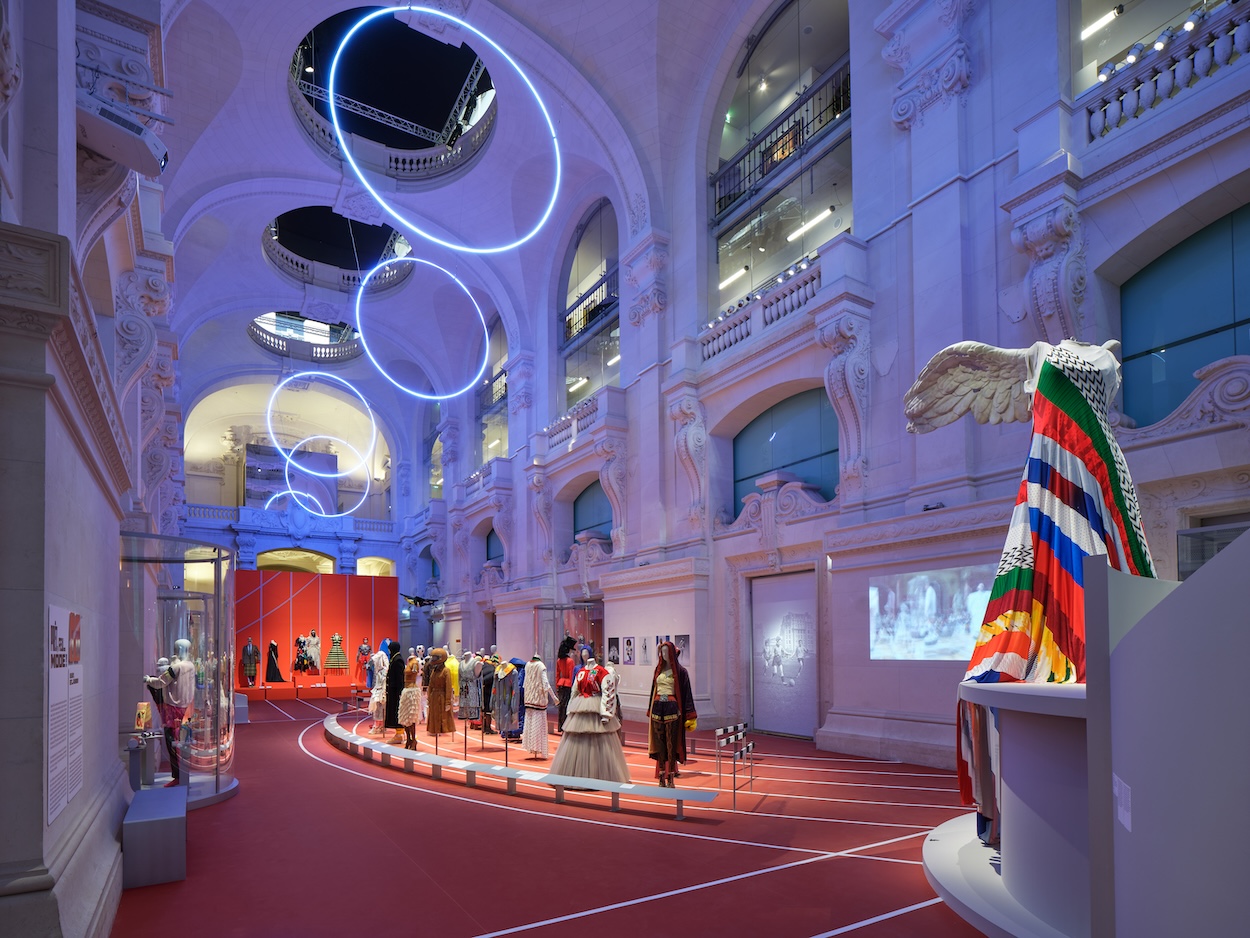“Mode et Sport” at the Musée des Arts Décoratifs features Paris’s great couture houses, but it also dives deep into the historical ties between what’s shown on the runway, how we dress today, and the centuries-long role that movement has played in shaping both. Rather than rehashing Googleable fodder like which creative directors have designed Olympic uniforms over the years, the show takes viewers out of modern Paris and back to Ancient Greece, the Renaissance, and the Middle Ages.
Monied classes during these times transformed survival mechanisms like hunting and combat into entertainment or opportunities to peacock and prove themselves. Period manuscripts, garments, and artworks illustrate how these times eventually spurred on the likes of textile innovation and even women’s liberation through the rise of bifurcated trousers. While armchair art historians are likely well-versed in the scandal caused by Elisabeth Vigée le Brun’s portrait of Marie Antoinette en chemise, they likely don’t know about the uproar caused by Louis-Auguste Brun’s masculinized hunting portrait of the royal. In it, she’s easily mistaken for an anonymous nobleman as she rides astride the horse (instead of sidesaddle) in men’s hunting clothes. Each of these elements was unheard of for the time, and together they caused such a sensation that the artist created a second, more socially acceptable version of the image.
It’s this deft use of surprise that curator Sophie Lemahieu deploys to striking effect. For example: Europe’s interwar years are often credited with propelling women into modernity, and the garments on view emphasize just how quickly those changes came to pass. Within the span of 40 years, ankle-grazing poplin wading dresses from the Victorian era were replaced by prototypical bikinis. Bathing ensembles from the 1930s, like a cotton-linen Hermès shorts suit, a knit jersey pantsuit that looks fresh from a Chanel resort collection, and a two-piece high waist swimsuit seem shockingly contemporary. Speaking of Chanel, her knitted jersey suits from the 1920s and breezy dresses from the ‘30s boldly position her as a godmother of athleisure.
In a show brimming with moments of discovery, one stands out above the rest. Like René Lacoste, the forefather of the namesake brand as it exists today, Lemahieu shares that designers Emilio Pucci, Ottavio Missoni, André Courrèges were also accomplished and impassioned athletes who considered comfort and mobility in their ready-to-wear. “It’s not enough to play and win,” Lacoste is quoted as saying by Lemahieu. “Style also matters.”
The unending buzz of the fashion industry’s news cycle can make five years of industry goings-on feel like a lifetime. The final few galleries, which are dotted with the neon lycra Gym-Tonic getups from the ‘80s, and ‘90s tracksuits by Juicy Couture and Sonia Rykiel, the minute nature of the industry’s present moment is cast into sharp relief. For the finale, visitors walk laps around vintage and contemporary sports-inspired couture—newly contextualized by centuries of art, history, and cultural changes.

